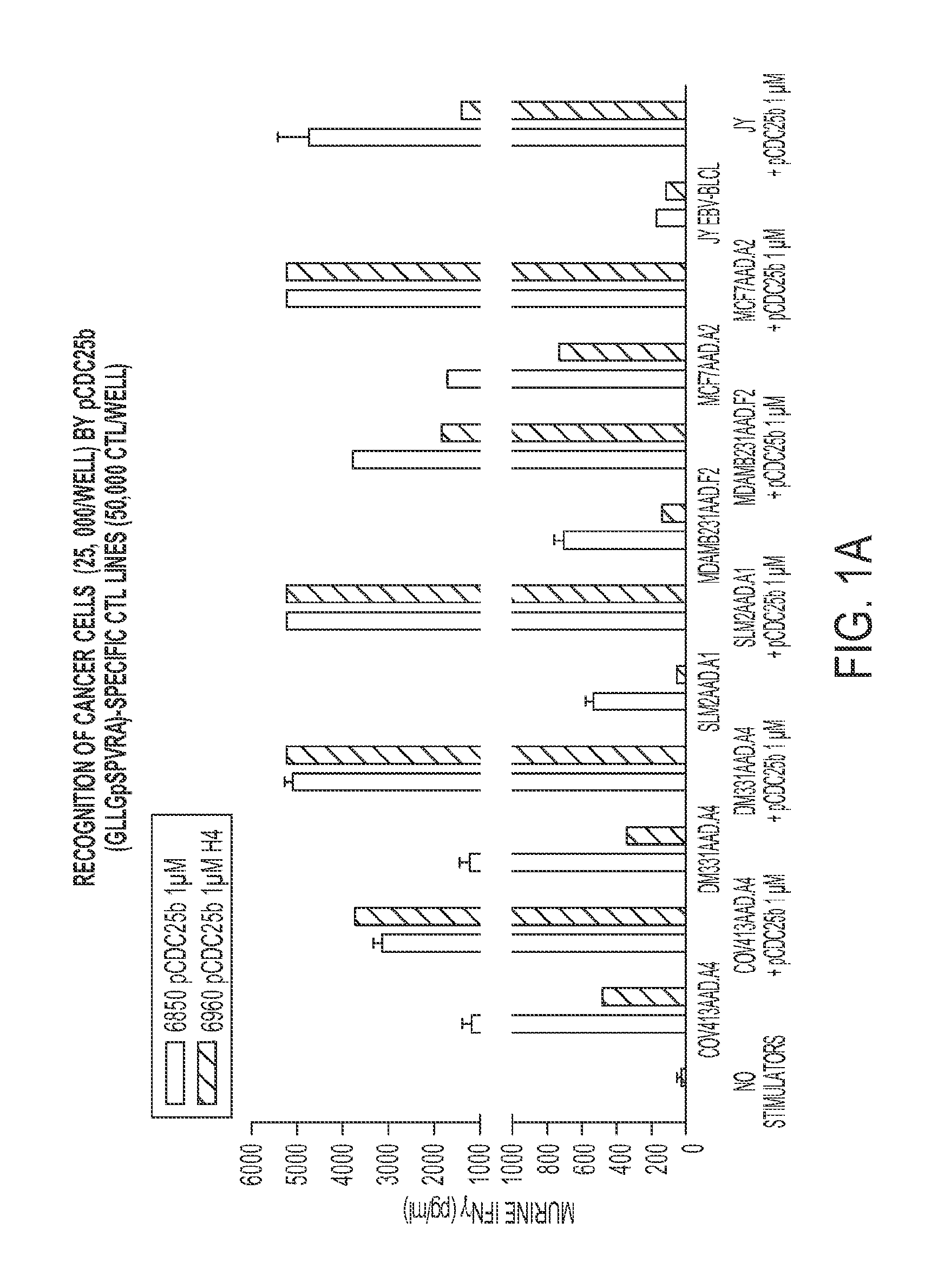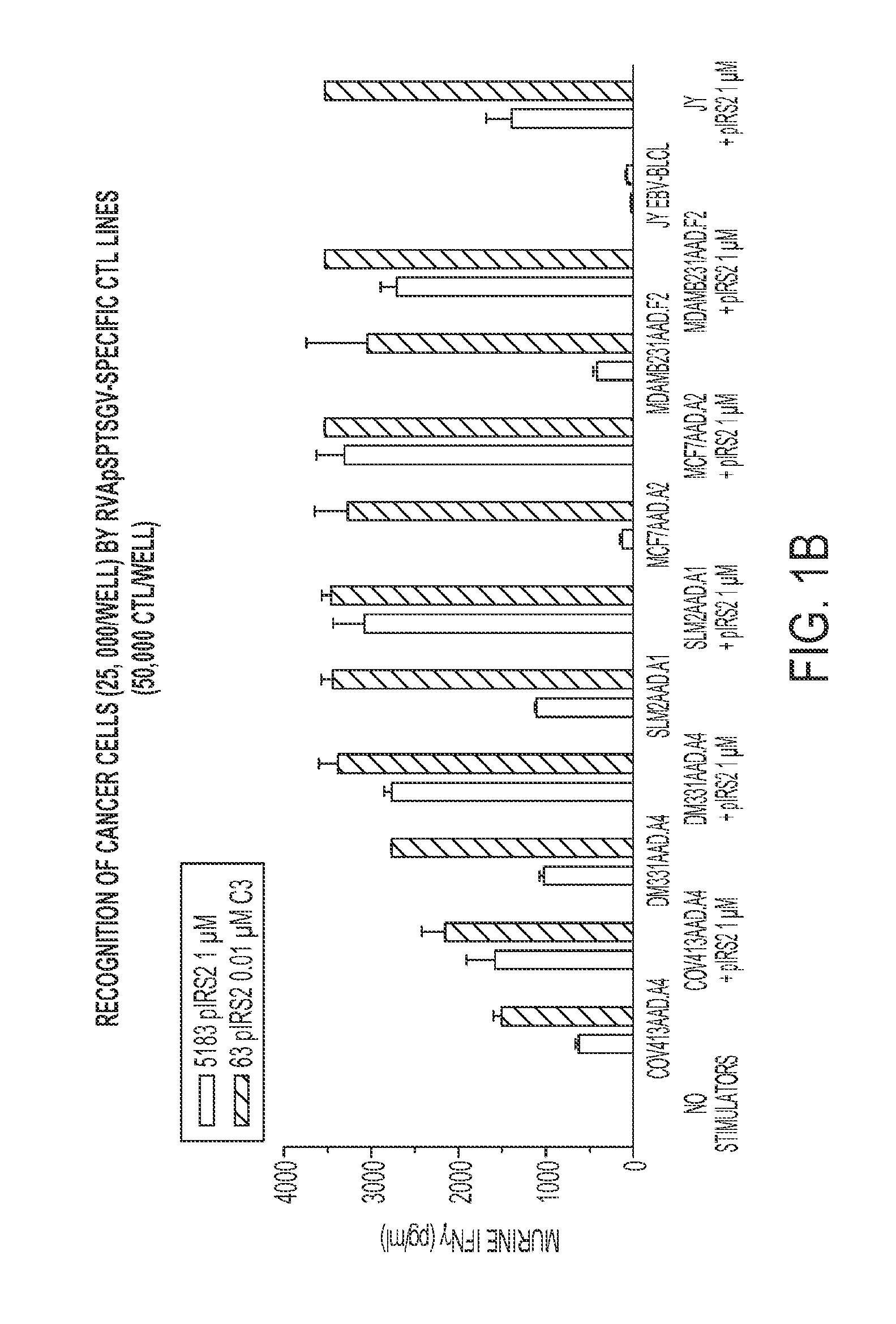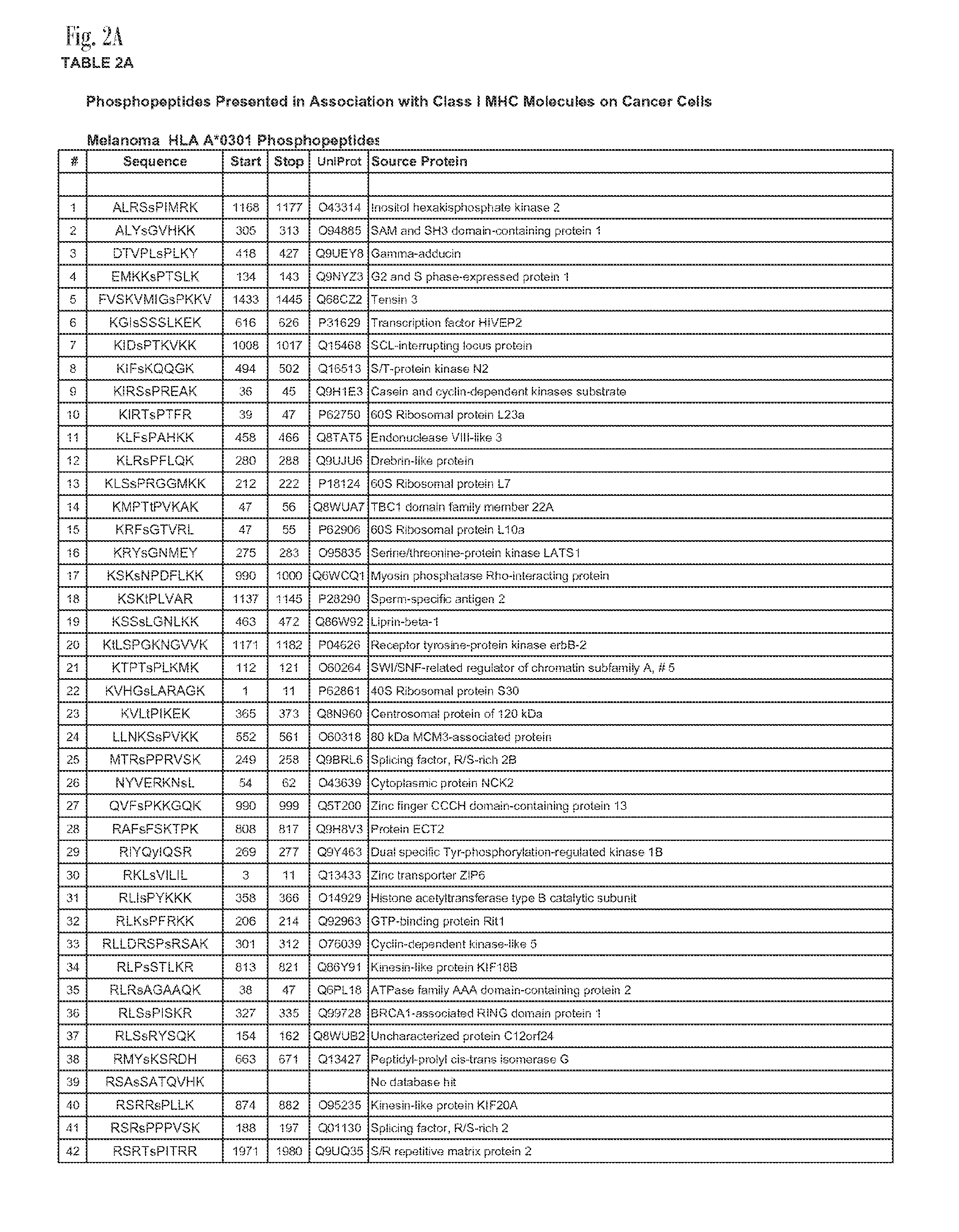Class i mhc phosphopeptides for cancer immunotherapy and diagnosis
a phosphopeptide and immunotherapy technology, applied in the field of cancer diagnostics and therapeutics, can solve the problem of not being able to predict which protein phosphorylation sites in a cell
- Summary
- Abstract
- Description
- Claims
- Application Information
AI Technical Summary
Benefits of technology
Problems solved by technology
Method used
Image
Examples
example 1
[0046]The present example encompasses inter alia a set of phosphorylated peptides presented by HLA A*0101, A*0301 and B*4402 on the surface of melanoma cells that have the potential to (a) stimulate an immune response to the cancer, (b) to function as immunotherapeutics in adoptive T-cell therapy or as a vaccine, (c) to facilitate antibody recognition of the tumor boundaries in surgical pathology samples, and (d) act as biomarkers for early detection of the disease. The present invention provides at least 246 class I MHC peptides presented on the surface of melanoma cells in association with the HLA molecules A*0101, A*0301, and B*4402.
[0047]Tables 2A through 2E, are shown in FIG. 2A-2E. Sequence identifiers are listed in the first column. UniProt database sequences provide the sequences of the full human proteins from which the peptides are derived. The UniProt sequences are incorporated by reference.
[0048]The class I phosphopeptides antigens reported here allow adoptive T-cell the...
PUM
| Property | Measurement | Unit |
|---|---|---|
| time | aaaaa | aaaaa |
| composition | aaaaa | aaaaa |
| area | aaaaa | aaaaa |
Abstract
Description
Claims
Application Information
 Login to View More
Login to View More - R&D
- Intellectual Property
- Life Sciences
- Materials
- Tech Scout
- Unparalleled Data Quality
- Higher Quality Content
- 60% Fewer Hallucinations
Browse by: Latest US Patents, China's latest patents, Technical Efficacy Thesaurus, Application Domain, Technology Topic, Popular Technical Reports.
© 2025 PatSnap. All rights reserved.Legal|Privacy policy|Modern Slavery Act Transparency Statement|Sitemap|About US| Contact US: help@patsnap.com



